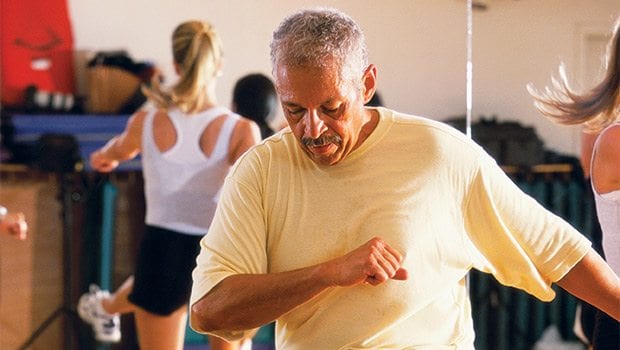Exercise and high blood pressure
An alternative method to keep your pressure low

It’s well established that exercise helps lower or prevent hypertension. At first glance, however, that seems incongruous. Clearly, blood pressure rises during exercise and the pulse rate jumps up. The heart has to pump harder and faster to shunt more blood to muscles for energy. But that’s a short-term effect.
At rest the heart beats between 60 to 100 times a minute, but can more than double during strenuous activity. Regular exercise fine tunes the heart to make it more efficient. Ultimately, the heart can pump the blood with fewer beats and less effort. Some well-toned athletes have resting heart rates of 40 beats a minute.
Regular exercise also helps keep arteries flexible. Arteries, the blood vessels that deliver oxygen to muscles and organs, are partly elastic and give somewhat to accommodate the burst of blood with each heartbeat. This accommodation allows the blood to flow with less resistance, which in turn prevents excessively high blood pressure.
Perseverance is key. To keep your pressure low it is necessary to keep exercising on a regular basis. According to Mayo Clinic, it takes about one to three months for regular exercise to have an impact on blood pressure. Additionally, the benefits last only as long as you continue to exercise.
Actually, exercise multitasks in relationship to blood pressure. It not only lowers one’s numbers, it helps maintain weight and reduce stress, both of which are closely linked to high blood pressure.
The good news is that your exercise program does not need to be intensive, nor elaborate. A simple walk, household chores and even gardening will do the trick. The U.S. Department of Health and Human Services recommends that adults participate in 150 minutes of moderate-intensity activity every week. That translates to about 30 minutes five times a week.
It’s not necessary to do a full half-hour at a time. Ten-minute intervals will do. Three such intervals a day will get you to the half-hour level, and offer the same benefit as a 30-minute workout.
But what constitutes moderate-intensity exercise? Here’s a tip. If you can sing and maintain your level of effort, you’re not working hard enough. If you are breathing too hard and fast and can say only a few words without taking a breath, the activity is too strenuous. If you are able to talk and walk, but cannot sing, it is considered moderate-intensity. Examples are brisk walking and biking.
Researchers at the Healthy Lifestyles Research Center at Arizona State University recently published a study that suggests that just standing can improve blood pressure. In a small sample of overweight and obese people, they compared blood pressure in four different activities — sitting, walking, cycling and standing. They found that systolic blood pressure — the upper number that measures pressure when the heart is contracting — was lower in people who stood for 10 minutes every hour during the work day. Pressures were lower for those who followed the same schedule using treadmill desks or under-desk exercise bikes. For diastolic pressure — the low number that measures pressure when the heart relaxes — only cycling beat out sitting in lowering pressure.
Standing has become the new buzz word for exercise. Some offices are now equipped with standing desks to discourage workers from sitting most of the day.
The most positive aspect of regular exercise is that in many people it reduces the need for medication. Regular exercise can lower systolic rate 4 to 9 mm Hg, which equals some prescription medications. Healthy lifestyles, which include not smoking, weight control and healthy eating in addition to exercise, can obviate the need for high blood pressure medication.







